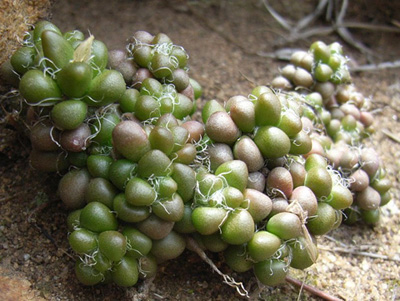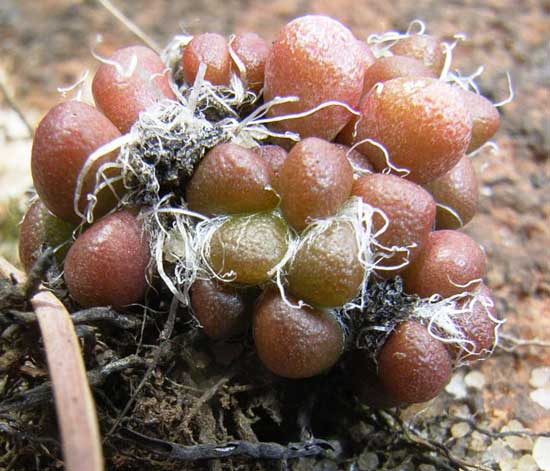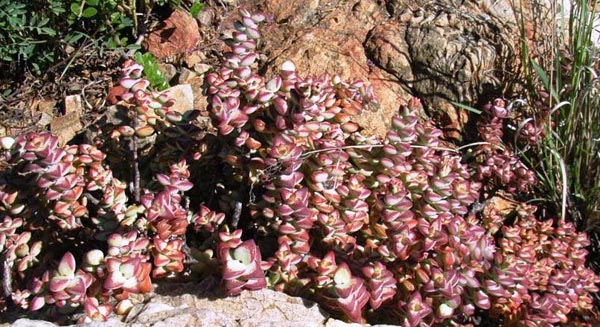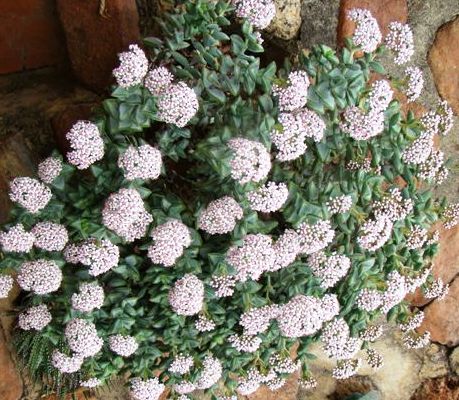|
Botanical name |
Adenia fruticosa subsp. fruticosa |
|
Other names |
Green-stem; bobbejaangif (Afrikaans) |
|
Family |
Passifloraceae |
|
Dimensions |
Climber with multiple whiplike branches of up to 5 m, attaching to tree and other supports through tendrils |
|
Description of stem |
Thick green trunklike base of up to 2m in height and over 0,5m in diameter from which the sleder branches emanate |
|
Description of leaves |
3 to 5 blue-green leaflets arranged digitately upon a long petiole; leaflet shape varying from round to ovate or obovate; margin entire; a small gland at the end of the petiole at the base of the leaflets |
|
Description of flowers |
Green cymes, female flowers smaller in August and September |
|
Description of seed/fruit |
Oval capsule containing up to six seeds |
|
Description of roots |
|
|
Variation |
Different subspecies inKwazulu-Nataland the north ofLimpopo |
|
Propagation and cultivation |
Transplants if base of stem and roots are not too badly damaged and good drainage is ; thesmaller specimen seems to survive better; frost-sensitive |
|
Tolerances |
|
|
Uses |
Popular indigenous garden subject |
|
Ecological rarity |
Could be endangered by popularity and development |
|
Pests and diseases |
Stem may rot from over-watering and poor drainage |
|
Other |
|
|
Location |
Thorny bushveld in rocky places and on sandy soil |
|
Distribution (SA provinces) |
Mpumalanga,Limpopo |
|
Country |
South Africa,Zimbabwe |
- Hits: 5913





